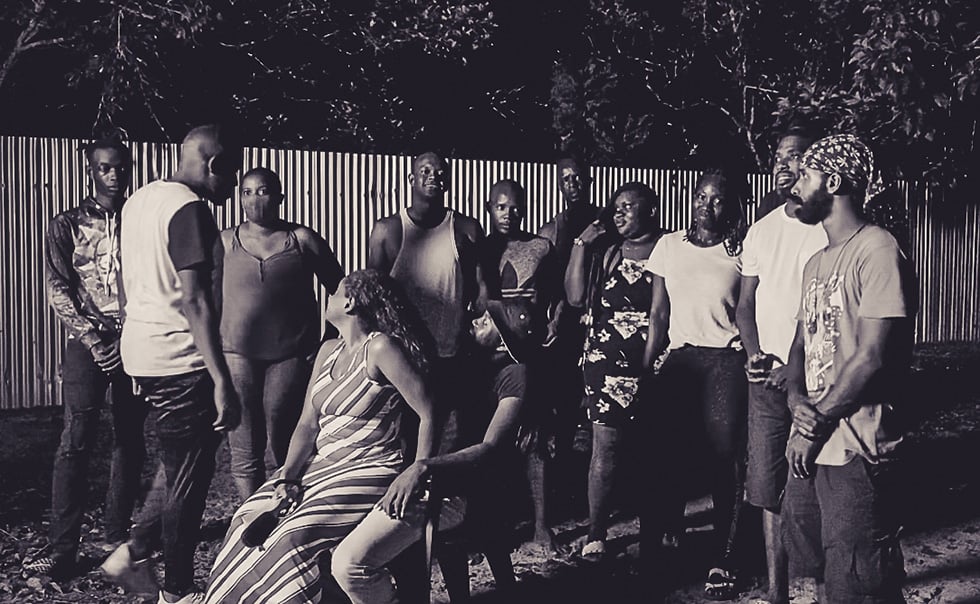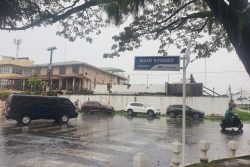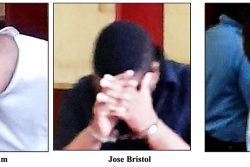The sun had dipped on the Atlantic Ocean and mosquitoes arrived out of the dense green vegetation bordering Hope Beach. Darkness crept onto the land as the waves rushed in. The film crew had to get the shot but nature did not care. A generator was running, a light was plugged in and various batteries were charging. If the film equipment became submerged in the water, at least $2 million.
When the waves rushed in, hands grabbed the equipment and dashed to higher ground. The filmmakers managed to push themselves back and save their equipment to complete the film. This memory of running from the incoming high tide on the set of Eating Pawpaw on the Seashore, I believe, will stick with me.
It took a community to support the film amid many obstacles and during my stay in the United Kingdom – London, where the film premiered and Birmingham – I kept thinking of the maxim, “no man is an island.” I have had so much support from kind and generous people, who believe that film and the arts have a part to play in Guyana. This support has helped my growth as an artist and a person. I feel grateful and more patient when creating.
Good things take time and it is okay to breathe and relax. Support comes in many forms – encouraging words, actions, time, community building and money – and each is beneficial to a creative person. The first three forms of support came from the time I became involved in theatre and film. Money is harder to receive, but it is vital for the success of a sustainable creative industry. In the meantime, I have embraced the first three and remained patient for the last to arrive.
It is good to know that your work has value outside yourself; encouragement can give an artist motivation to continue creating. This form of appreciation should not be dismissed because it shows artists that their value is not only dependent on money but the feelings their work can conjure in people. Money is important, but people remember how a book, painting, play, music or film made them feel. These feelings should not be dismissed because they can help people understand themselves or the world more.
Feedback is an important part of the creative process. It allows the creator to see blindspots and clarify any vague or weak story elements. It is one of the most loving things someone can do for a creative person even if the criticism might not be what the artist would like to hear. Many times it has helped in growth and a stronger story.
Sometimes the contributions come in the form of in-kind support. In my case, relatives opened up their homes for me to film; sometimes from 6 am to 6 pm or later. Feeding a cast and crew can also be invaluable. I budgeted for a film once and went over the allotted time. I had no finances to feed my cast and crew properly. We were going to eat plantain and eggs on the last day, but my cousin, Candacy Bobb, whose home we were using, decided to cook for the cast and crew. The nourishment and kindness gave us the willpower to finish the day’s work.
Community
Film is one of the most communal artistic endeavours. Artists in Guyana still have to find ways and means to cultivate and improve their craft, despite the lack of financial resources. As a community, we look at the resources we have and share them with each other. The resources can be skill-based or material. The skill of many hands was able to save filming equipment from the tide as mentioned above.
Someone might have access to a piece of equipment that we can share or borrow. This is how we have to make films when the resources are not readily available. Waiting for the right time would be denying ourselves the means to succeed when opportunity arrives because we were not prepared for it. Reflecting on this way of filmmaking in a country that does not support this endeavour has shown me that the work must be done; only then can the community be able to thrive.
I produced a film for $10,000 in my home and was able to do that because the cast and crew felt it was important to make films and did it for free. I didn’t know it then, but I was building a community for the long-term. Someone from the Commonwealth Creative Foundation decided to fund a film for £8,000 when they viewed that film which was made on a micro-budget.
It was the first time I had received any funding for a creative project. I was able to purchase a camera, lights and hire a crew. The project gave me many lessons. Some of them were positive
and some of them were steep learning experiences. Some people I have formed long-term collaborations with; this is important. Creative relationships that are genuine with the same goal will constantly improve the quality of films. When there is a supportive artistic community, more artists’ work can travel further because a support system has been established. The internet has opened a community outside of Guyana. Someone from another country can have access to an artist’s work via the web and it can grow through word of mouth.
Coming together can make things work, but I am still realistic. The creative community still needs support. We need transportation, places to film, food to eat and we need to compensate people for their time. It would be wonderful to have these things available for us but there is something within creatives that make us create despite limited financial support. We love art and for a lot of us, there is no purpose to life without it. It gives us hope, nourishes our spirit and compels us to imagine a better world.
(If you would like to contribute to film in Guyana, contact the Georgetown Film Festival. You can reach out on https://www.facebook.com/georgetownfilmfestival and https://www.instagram.com/ georgetownfilmfestival/)





